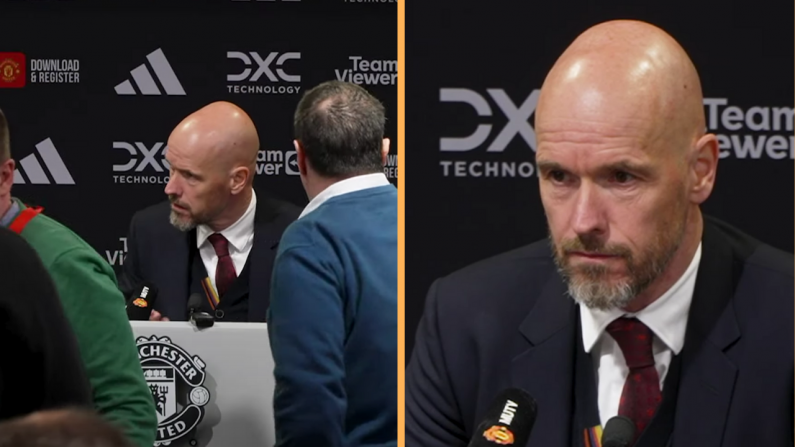There was just over three minutes left in the first quarter. The New Orleans Saints offense was inside San Diego Charger territory, facing a 3rd & 6. Yet, wide receiver Devery Henderson did not care about the six yards his team needed for a first down. Instead Henderson had his mind set on what was about to be a record-setting touchdown reception.
Henderson's job was relatively simple, but difficult to execute. His job was to run directly at the Chargers cornerback who was covering him, Quintin Jammer, before faking a run to the outside(a run that would get him seven yards, enough for the first down) and sprinting upfield into what would hopefully be wide open space. Henderson succeeded in his attempt to lose his marker, before catching a perfectly thrown pass from his quarterback to strut into the endzone for a 40 yard touchdown pass.
Alas, Henderson's role in this record-breaking touchdown was minor. Henderson, a wide receiver, wasn't breaking a record for himself, but rather helping his quarterback rewrite a passing record that had stood untouched for 52 years.
That touchdown late in the first quarter of Sunday night's game gave Drew Brees a streak of 48 consecutive games with a passing touchdown. In other words, one more than a mark set in 1960 by the great Johnny Unitas.
Unitas' record had stood for so long that many had begun to refer to it as the NFL's “unbreakable record.” Unbreakable is just another word to Drew Brees that motivates him to prove himself.
At 33 years of age, Brees had already consistently proven himself over and over again during a career that broke multiple records and overcome overwhelming depths of adversity. During his time with the New Orleans Saints, Brees had already broken Dan Marino's single season record for passing yards, after previously leading the Saints to a Super Bowl victory in 2009. That Super Bowl came after being released by the San Diego Chargers, rejected by the Miami Dolphins and landing in a city still recovering from the long-term ramifications of Hurricane Katriona.
On the grand scale of things, breaking this record is only a minor part of Drew Brees' career. He will likely never be remembered for this moment over his performance in the Super Bowl or his outstanding consistency leading the Saints franchise as a whole. This moment won't define what is certain to be a hall-of-fame career for the quarterback, but it does epitomize his career.
Just like Brees himself, the validity of this record is being doubted by many football fans.
Brees entered the NFL doused in more doubt than anyone. Despite showing superstar potential in college, he fell in the draft to the second round because of his height. Brees was taken 32nd overall by the Chargers in 2001. He is listed at 6'0, but it wouldn't be a surprise if that was a generous listing.
Height is something that Brees couldn't control. It's not his fault that he wasn't big enough to see over the average offensive or defensive linemen. He didn't decide to be smaller. Instead, Brees set out disproving his doubters by mastering his technique and draining his unnatural levels of talent. Undersized quarterbacks are overlooked by professional teams because they find it more difficult to properly see the whole field when making decisions in the pocket. Smaller quarterbacks are generally forced to run outside of the pocket which makes passes more difficult and allows defenses to concentrate on defending only one side of the field. The natural response for quarterbacks who can't see past their offensive linemen, or the opposition's defensive linemen, is to run to space. Brees has never been athletic enough to consistently do that however.
Brees instead used his excellent pocket presence, awareness, poise and technique to continue to throw from the pocket in spite of his size. Brees' technique is unbelievable considering how awkward a position he is forced to not only throw the ball from, but also read defenses from. No other elite quarterback has ever faced such adversity on every single snap as Brees has.
Brees' height isn't the only adversity he faced in his career. In the final game of the 2005 season, when Brees was 26 and the starter in San Diego, he suffered a torn labrum. The labrum is a vital rim of cartilage that secures the shoulder. Brees suffered the injury to his throwing shoulder, but much worse than that he was set to become a free agent after that season. Instead of re-signing an injured Brees, the Chargers offered him a small contract before drafting Philip Rivers that season.
Obviously seeing where the franchise was going, Brees didn't re-sign with the Chargers, who moved happily on with Rivers. That left Brees with no team and plenty of question marks about his ability to still play the game at a time when he was entering his prime. Even though he had been productive for the Chargers, only two teams showed any interest in Brees as a free agent. One of those teams, the Miami Dolphins, then dropped their interest after Brees failed a physical because of his injured shoulder. That left Brees with no other option but to sign with the New Orleans Saints.
The Saints had finished the previous season with the second worst record in the whole NFL. Furthermore, the year before Brees' arrival, New Orleans had been decimated by Hurricane Katrina. Not only was Brees joining a franchise that was going nowhere, he was moving to a city that needed him to be much more than just a quarterback.
Luckily for the Saints, Brees proved to be an amazing leader both on and off the field. He has been a key part of the city's recovery off the field while also leading the Saints to that Super Bowl victory in 2009.
Those who doubt the validity of the record Brees set on Sunday point to the fact that the NFL is now a completely different league today to what it was when Unitas played. Unitas didn't get the same protection that quarterbacks do nowadays, nor did his receivers. Unitas played a version of football that was much more physical and dangerous than the current compound of rules and philosophies that makes up the modern game. Football was a game where the toughest team won out more often than not. The game was seen as one where players just strapped on a (leather) helmet and hit whoever was in sight.
That meant that the quarterback wasn't a primary weapon on offense. Today's NFL sees players like Aaron Rodgers, Peyton Manning, Tom Brady, Brees and Eli Manning act as the focal points of the offense. In Unitas' day, the offense revolved around the running-back. Bill Walsh and Joe Montana had not yet revolutionized the passing game, as they would in the 1980s.
By some criteria, that makes Unitas' achievement greater still than Drew Brees'. During Unitas streak to 47 games, he threw 697 completions on 1,298 attempts. Comparitively, Brees threw 1,302 completions and 1,891 attempts. Unitas played from 1956-1973 and set records in all the major categories of passing statistics, but if those numbers were put in comparison with today's NFL, they would belong to an average quarterback. It is undoubtedly easier for teams to pass in today's NFL, and the quarterbacks do benefit from getting more exposure. That would indicate that these records cannot be compared.
That may be true, but to qualify the on field achievements without balancing them in the context of the respective overall careers is just unfair.
Records, whether they be Olympian, career-defining or something as simple as breaking your own personal one on a treadmill, are achievements born out of overcoming adversity. You hold a record because you have done more, gone further or endured more than anyone before you. From a statistical point of view, Brees has gone further than Unitas. From an adversity point of view, he may have gone even further.
Now, Unitas didn't have it easy early in his career. He was drafted in the ninth round by the Pittsburgh Steelers but was released before his first season without playing a game. Unitas was thought not to be smart enough by then Steelers Head Coach Walt Kiesling. From there, Unitas earned a tryout with the Baltimore Colts and won a roster spot before being named the team's starter in 1957. Once established as a full-time starter, it was relatively plain sailing for Unitas as multiple MVPs came his way.
Drew Brees wishes his career had come so simply.
Brees may benefit from the roughing the passer calls and defensive backs hesitation to touch wide receivers today, but don't use those notions to take away from the historical context of his achievement. Unitas played in a time when the offense didn't get as much help from referees, but he also played against defenses that hadn't evolved to match his skills. Unitas never had to deal with the zone-blitz(a disguised blitzing approach developed by Dick Lebeau), Buddy Ryan's 46 defense from the 1980s or even the understanding of how to attack a quarterback's blindspot.
For every argument against, there is a counter for. For every question posed, there is an answer. For every doubter, there is Drew Brees.
Oh and by the way, Devery Henderson wears number 19, the number that Unitas made famous during his career as a Baltimore Colts quarterback. He also caught that 40 yard touchdown against the San Diego Chargers, Brees' former team, exactly 40 years after Unitas left the Colts to play one final season with the San Diego Chargers. A season when he struggled more than he succeeded.
Read more of Cian Fahey on Irish Central and in the Guardian's US Sport's section.
Also, follow him on Twitter, that's an order - @Cianaf








